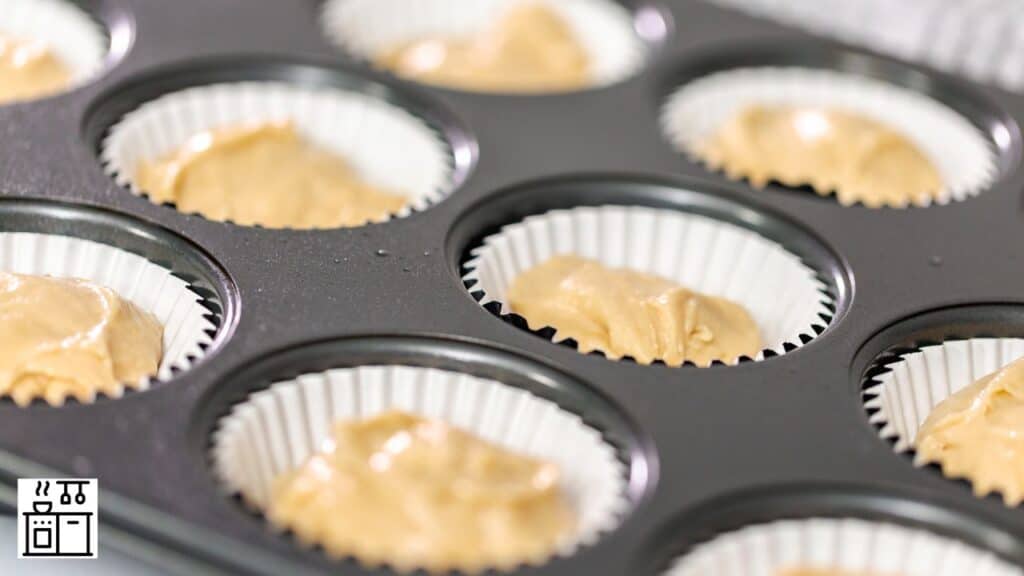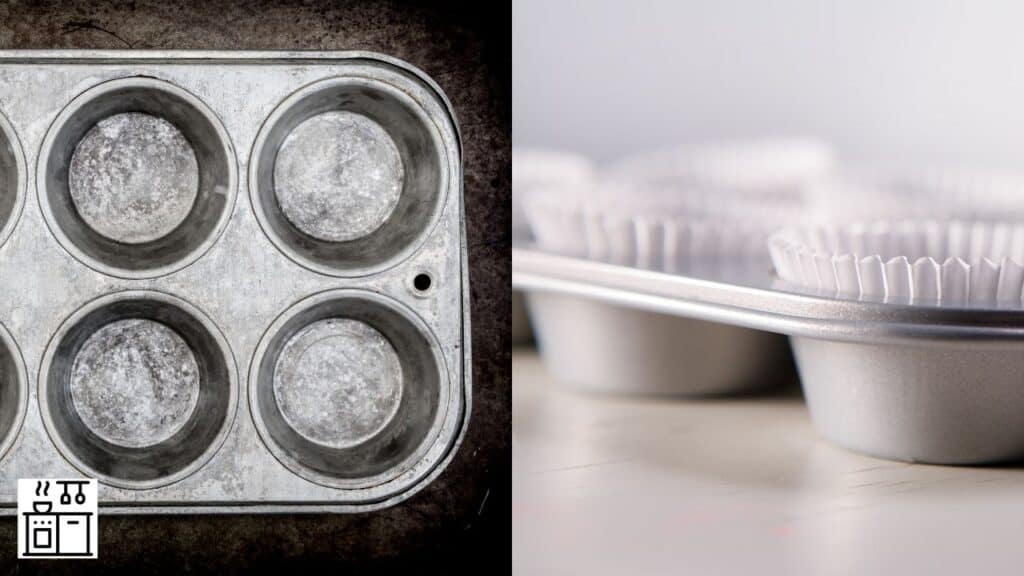A cupcake pan and a muffin pan are similar and hence easily mistakable. However, there aren’t the same.
Cupcake and muffin recipes are different. There are subtle differences in their texture and shape.
Hence, the pans used to make them also differ.
Though you can use muffin pans and cupcake pans interchangeably, choosing the right pan for the recipe will improve the outcome.
8 Main Differences Between Muffin and Cupcake Pans
You can make cupcakes in a muffin pan or the other way around.
But, just as cupcakes differ from muffins, there are subtle differences between the muffin and cupcake pans too.
So, if you wish to prepare perfect muffins or cupcakes, you may like to learn about these differences.
Here are the main differences between the muffin and cupcake pans.
1. Shape of The Pans
Although muffins and cupcakes look similar, there are obvious differences between them.
If you observe them closely, you will notice that muffins have a dome-shaped top. Cupcake tops are more rounded.
This difference in shape is because the ingredients used in each recipe are different.
Muffins usually have fillings like fruits and nuts. So the batter used to make muffins is dense.
Cupcakes, as the name suggests, are small cakes. Common cupcake recipes don’t include any fillings.
The batter is airy and fluffier than the muffin batter.
To accommodate this difference, muffin pans are built differently from cupcake pans.
They are circular and look like a tray with pots. Cupcake pans are typically in the form of a tray.
2. Depth of The Pans
If you observe muffins and cupcakes while they are baking, you will see that the cupcake batter rises well.
Muffins are heavier because they contain flour and heavy fillings.
Meanwhile, the cupcake batter is like a cake batter. It’s well-aerated, fluffy, and rises well during baking.
Cupcake pans are deep enough to allow the batter to rise well. They can hold 2 to 5 ounces of batter.
Meanwhile, muffin batter doesn’t rise as much. Hence, these pans are slightly smaller.
Most muffin pans will hold only 1 to 3 ounces of batter.
3. Variety of Shapes
One of the best things about cupcake batter is that it sets in different shapes.
If you use a suitable mold, you can get creative while preparing cupcakes. There are plenty of cupcake pans in different shapes. You can find stars, cartoon characters, geometrical shapes, animals, and much more.
However, you may not find muffin pans in such shapes.
Depending on the ingredients used in the filling, muffin batter may not adapt to the shape of the mold like cupcake batter.
So you can’t get too creative or exactly predict the shape it will take. By default, muffin pans are circular.
4. Dimensions of The Base
We saw earlier that the shapes of cupcakes and muffins are different.
Hence, the depth of the depressions in the pans is adjusted to accommodate just the right quantity of batter.
Now, the top of a muffin is arched and dome-like. Meanwhile, the tops of cupcakes are well-rounded.
These differences in structure occur due to the way the batter rises and the design of the pans used for baking.
Cupcake pans are smaller at the base and wide at the top.
Although you may not notice a significant difference immediately, muffin pans are flatter than cupcake pans.
In cupcake pans, the base is typically 5 cm in diameter.
Meanwhile, the top is 7 to 9 cm in diameter to create a more rounded shape.
5. Need for Liners

Almost every cupcake comes with a cupcake liner. Meanwhile, muffins may or may not have liners.
This difference is because of the type of batter used. Cupcake batter is thinner, and it spreads.
Using cupcake liners ensures that the batter stays in the mold.
It also makes it easy to lift the cupcake out of the molds after baking.
Unless the cupcake tray is non-stick, the cupcakes may stick to the base otherwise.
However, muffin batter is dense and easier to spoon into a mold. You can make muffins without using liners in a muffin pan.
Grease the muffin pan with butter and flour before adding the batter. The muffins will lift off easily after baking.
You can also use liners for muffin pans if you prefer.
6. Filling the Pans
The amount of batter added to each mold is different in the case of muffins and cupcakes.
When baking a cupcake, you shouldn’t overfill the cupcake liner.
You should fill only half of the liner with batter to allow it to rise properly.
If you overfill the liners, the batter will overflow, and the cake will lose its shape.
This doesn’t happen with muffins.
The ingredients used for the batter and the shape it takes during cooking are different for muffins.
The batter doesn’t rise as much as it does for cupcakes.
So you can fill the muffin pan or liner above the halfway mark, and it will not overflow.
The batter, being dense, will remain inside the liner or pan.
7. Space Between Each Vessel
In muffin pans, the vessels are spaced further apart than in cupcake pans.
This is because muffin batter rises within the vessel till a point where it flattens out.
Beyond this point, it spreads slightly outside the mold and sets. This is what creates the characteristic dome-shaped top.
Muffin pans have more space between each adjacent vessel to allow the batter to spread. It helps the muffins obtain their unique shape.
However, the way in which cupcake batter rises is different.
The batter will rise within the liner and form a nice round top without spreading out.
So cupcake trays don’t have much space between adjacent vessels.
Interesting Reading:
8. Best Muffin Pans Are Made of Non-Stick Material
Muffin batter has the tendency to stick. When you pour it into a muffin tray, it will rise and spread along the top.
Regardless of the recipe used, the batter will stick to the sides of the muffin pan inside the vessel and on the top.
It can make cleaning difficult. To avoid having to scrub the pan, it’s better to choose non-stick muffin pans.
This will ensure that the muffins lift off easily after baking.
Even when using a non-stick muffin pan, it’s a good idea to grease the pan with butter and dust it with flour before pouring the batter.
This will ensure that no bits of the batter or filling stick to the pan, and it’s easier to clean.
Cupcake batter is sticky. However, this doesn’t pose a problem because cupcakes always use cupcake liners.
Cupcake liners are made of oven-proof baking or parchment paper that separates the batter from the surface of the pan.
There is no risk of the batter sticking to the surface of the pan.
Hence, the material used to construct a cupcake pan doesn’t affect the outcome.
It will only affect the time required for cooking since different materials have different heat conduction capabilities.
Cupcake pans can be made from aluminum, silicone, non-stick materials, or a variety of other construction materials.

